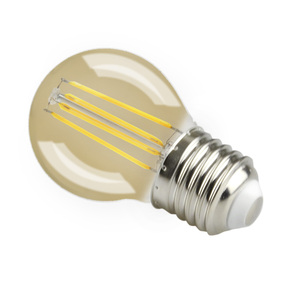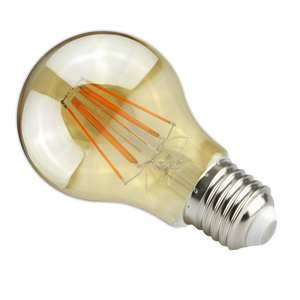
All categories
Featured selections
Trade Assurance
Buyer Central
Help Center
Get the app
Become a supplier

(186483 products available)






 Ready to Ship
Ready to Ship













































Companies import LED light products to meet the rising demand for energy-efficient, long-lasting lighting solutions. There are different types of LEDs to import depending on the intended use and market demand.
Below are the common types of LEDs to import:
LED bulbs
LED light bulbs are popularly known for their energy efficiency and long lifespan. They come in different types such as; A19/A60 bulbs, A shaped LED bulbs, and decorative LED bulbs among others.
Cobb LEDs
These are semiconductor chips that contain multiple LED chips. They are known for their high light output and efficiency. They produce light that is similar to that of incandescent bulbs.
SMD LEDs
These are characterized by high brightness and are commonly used in lighting applications. They are used in LED strips, backlighting, and general lighting.
LED tubes
These are tubular lights that are used to replace fluorescent tubes. They are popularly known for their energy efficiency and longer lifespan. They are commonly used in commercial and residential lighting.
Smart LEDs
These are advanced lighting solutions that come with features such as; color changing, dimming, and voice control. They are popularly known for their energy efficiency and convenience. They are commonly used in residential and commercial spaces.
LED panel lights
These are flat panels that contain LEDs. They are commonly used in commercial and office spaces. They are popular for their uniform light distribution and energy efficiency.
LED downlights
These are recessed lights that direct light downward. They are popular for their efficiency and long lifespan. They are commonly used in residential and commercial ceilings.
LED strings and fairy lights
LED strings are decorative lights that consist of multiple LEDs. They are used for holiday lighting, outdoor, and indoor decorations.
LED flashlights
These are hand-held lights that use LEDs. They are popular for their brightness and energy efficiency.
LED traffic lights
These are traffic signals that use LEDs. They are known for their visibility and energy efficiency. They are commonly used in urban areas.
LED lighting has grown in popularity due to its high energy efficiency and long lifespan. Below are some of the key features and functions of LEDs that make them preferable over traditional lighting systems.
Long lifespan
One of the major advantages of LEDs is their long lifespan. Typically, LED lights have a longer lifespan than traditional bulbs by up to 25 times. This makes them a preferable choice for areas that are hard to reach. The long lifespan also means that the LEDs have a lower replacement rate, which reduces maintenance costs and makes them sustainable.
Energy efficiency
LED lights have high energy efficiency. They convert a large percentage of electrical energy to light energy and waste very little energy as heat. This makes them consume less power than traditional lighting systems. Due to their energy efficiency, LEDs have high lumen output per watt.
Durability
LEDs are more durable than traditional bulbs. They are made with solid materials, which makes them resistant to external shocks and impacts. They are also able to withstand frequent turning on and off due to their durability and do not get damaged easily from vibrations and external pressures.
Directional lighting
LEDs are good at directional lighting. They emit lights in a specific direction and do not require reflectors to direct the light as other bulbs do. This makes them a good choice for task lighting and spotlighting. The directional lighting also makes the LED lights more efficient since less light is wasted.
Versatility
LED lights are versatile and can be used in various applications. They are suitable for residential and commercial lighting and can be used in ambient, task and accent lighting. Additionally, LEDs are used in backlighting for electronic devices, automotive lights and display signage.
Low heat emission
Traditional lighting systems emit a large percentage of their energy as heat. On the other hand, LEDs have low heat emissions and are cool to touch. The low heat emission makes LED lights safer since they have a lower risk of causing burns or fires. Low heat emission also makes LEDs more suitable for lighting heat-sensitive areas.
Adjustability and compatibility
Most LED lights are dimmable. They can be adjusted to different brightness levels to create the desired ambience. Dimmable LEDs are compatible with dimmer switches that are used to regulate the amount of power supplied to the lights. This makes the lights more energy efficient. Additionally, LEDs can be combined with smart technology to create customized lighting solutions that can be controlled remotely.
LEDs are used in various industries and applications. The demand for specific types of LEDs will depend on the industry, and bulk buyers are likely to import what is in demand. Below are some scenarios to consider.
Lighting manufacturers import various types of LEDs to produce lighting products. For consumable goods, manufacturers will import standard 5mm LEDs, 10mm, and SMDs. These are used in:
Lighting manufacturers also import power LEDs. These have a higher lumen output and are suitable for:
Many retailers and wholesalers import LED strip lights. These flexible strips are used in accent lighting, under-cabinet lighting, and task lighting.
Electronics manufacturers use LEDs in various applications. They will import SMDs mainly because of their small size and form factor. SMDs are used in:
Companies that manufacture appliances will also import SMD LEDs. These can be used in the following appliance applications:
When importing LEDs, it’s important to check the quality and the compliance certificates. Some buyers may be willing to purchase bulk quantities of a new type of LED if there are samples available and the vendor can prove the quality.
When buying LED light products for resale, business owners should consider various factors to ensure they stock fast-moving items. Here are some of them:
Product Type
LED lights come in various types, and each is designed for specific applications. For instance, LED bulbs are suitable for general lighting, LED strips for accent and decorative lighting, and LED panels for commercial and residential indoor lighting.
Efficiency and Brightness
LEDs are popular for their energy efficiency. Business owners should look for products with high luminous efficacy. They should also consider products with different levels of brightness to cater to various customers' needs.
Color Temperature and Rendering
LEDs have different color temperatures. Buyers should get color temperature options to enable customers to choose according to their preferences. Business owners should also look for LED lights with high Color Rendering Index to ensure accurate color representation.
Dimmability
LEDs are compatible with dimmer switches that control the amount of light emitted. Buyers should get dimmable LED lights to allow customers to adjust to their preferred brightness and to save energy.
Quality and Lifespan
Business owners should get LED lights from reputable brands. They can read reviews and conduct brand research to ensure they stock quality products with long lifespans. Quality LEDs have a longer lifespan and are more reliable.
Compatibility
Buyers should get LED lights that are compatible with different accessories and systems. For example, if buying dimmable LEDs, ensure they are compatible with specific dimmer switches. Also, if buying LED strips, ensure they are compatible with various power supplies.
Warranty and Support
Buyers should choose LED manufacturers who offer warranties on their products. A warranty shows confidence in the product quality and provides customers with assurance. Business owners should also consider manufacturers who offer technical support.
Q1: What are the quality certifications that LED light suppliers should have?
A1: Buyers should look for suppliers with quality certifications such as ISO 9001. This shows the supplier has quality management systems. They should also have products certifications such as CE, RoHS, and EMC. The LEDs may also have other product-specific certifications. For instance, if the LED has a water resistance feature, the supplier can provide an IP rating certificate.
Q2: How can buyers evaluate the reliability of an LED light supplier?
A2: Buyers can look at the supplier's reviews, testimonials, and case studies. They can also request samples to assess the quality of the LEDs. If they are dealing with a large supplier, they can schedule a visit to the supplier's premises. They can also communicate effectively to get insights into the supplier's professionalism.
Q3: What are the common LED light defects buyers should look out for?
A3: Buyers should look out for defects such as non-working LEDs, color variation, and misalignment. They should also check for physical defects like scratches and dents. In case the LEDs have a waterproof feature, the buyer should look out for any tears in the material used to cover the LED.
Q: How long do LED lights last?
A: LEDS have a long lifespan. They typically last between 25000 to 50000 hours. This means they can last up to 5 years or more depending on the usage patterns.
Q: What are the common types of LED light bulbs?
A: The common types include incandescent LEDs, CFL, and halogen. The incandescent and CFL are similar to traditional bulbs. The LEDs are more energy efficient when compared to the others.